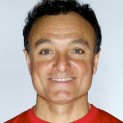Chapter 1: The Benefits of Healthy Active Living
1.1 Health and Physical Literacy
1.2 Why Take Health and Physical Education?
1.3 Play Your Position — We All Fit In!
Major Muscles and Bones of the Human Body
Chapter 2: Movement Competence
PREVIEW
2.1 Why Movement Matters
2.2 Movement Features and Patterns
2.3 Learning Movement Skills
2.4 Movement Principles
2.5 Game Strategies and Tactics
Chapter 3: Fitness Measurements and Appraisals
3.1 Health-Related and Skill-Related Fitness
3.2 Cardiorespiratory Appraisals
3.3 Muscular Strength and Endurance Appraisals
3.4 Performance-Level Appraisals
3.5 Understanding Body Composition
Chapter 4: Fitness Planning and Injury Prevention
4.1 Setting and Reaching Fitness Goals
4.2 Training Principles
4.3 Designing Your Fitness Program
4.4 Injuries and Injury Prevention
4.5 Exercises for Fitness and Health
Chapter 5: Healthy Eating
5.1 Meeting Your Nutrient and Energy Needs
5.2 Canada's Food Guide and Regulated Food Labelling
5.3 What Influences Our Eating Habits?
5.4 Dietary Trends and Practices
5.5 Developing a Healthy Eating Plan
Chapter 6: Sexual Health, Development, and Safety
6.1 Human Sexuality and Gender Identities
6.2 Healthy Intimate Relationships
6.3 Factors that Influence Sexual Decision-Making
6.4 Developing Your Decision-Making and Communication Skills
6.5 Safeguarding Your Sexual Health
Chapter 7: Substance Use and Addictive Behaviours
7.1 Factors Influencing Substance Use and Addictive Behaviours
7.2 Tobacco and Alcohol
7.3 Marijuana and Other Drugs
7.4 Problem Gambling and Other Addictive Behaviours
7.5 Responding to Substance Use and Addictive Behaviours
Chapter 8: Personal Safety and Emotional Well-Being
8.1 Ensuring Your Personal Safety
8.2 Promoting Positive Mental Health
8.3 Preventing and Responding to Threatening and Violent Behaviours
8.4 Safe and Healthy Online Relationships
8.5 Conflict Resolution and Anger Management
Appendices
- ACT High School CPR & AED Student Manual
- Five Recommendations of the Truth and Reconciliation Commission of Canada (A Call to Action)
Built-In Self-Assessment
HAL2.0 helps students take charge of their learning
The print and digital textbooks incorporate inquiry-based and active learning, and help empower students to take charge of their learning experience. Each end of section, and end of chapter review helps students self-assess their understanding of course content, while inquiry questions challenge them to deepen their understanding of important concepts. The digital textbook includes built-in interactive practice quizzes that provide automatic feedback, helping today's busy students study on-the-go.
A Differentiated Approach
HAL2.0 supports all your different learners
The HAL2.0 textbook is available in print and online, so you can differentiate your teaching approach to the individual needs and abilities of your students. Our digital textbooks can be accessed any time and on any device — all students need is an internet connection. They include interactive practice quizzes, highlighting and note-taking, and they seamlessly integrate with your
TeacherHUB!
Author
Ted Temertzoglou
Health and Physical Educator
Ted Temertzoglou is a graduate of the University of Toronto and Brock University and is a recognized leader in the physical literacy movement. He is the author of many works in this area and has been welcomed as a keynote speaker across Canada and abroad. He is the 2017 recipient of the R. Tait McKenzie Award, as a Canadian who has made a significant impact on physical education, health education/promotion, recreation, and dance and who has served the profession for more than 20 years.


